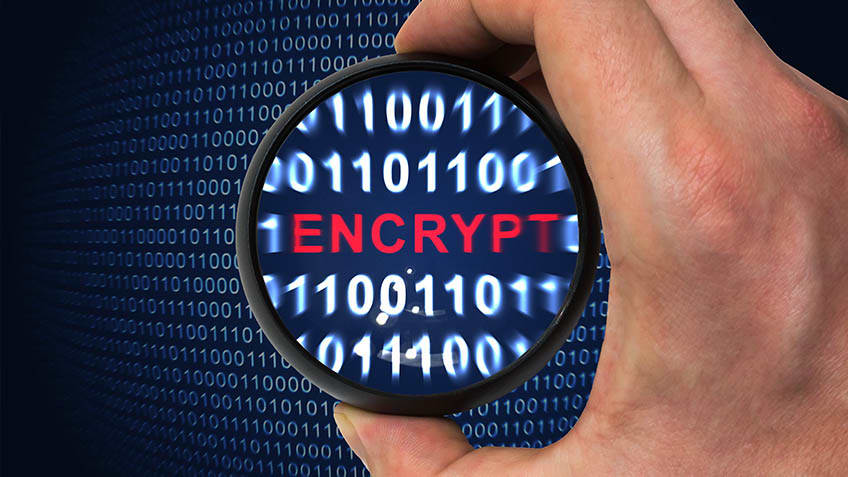Businesses and organizations have a wealth of data that they want to keep private and safe from cyber-attacks and data breaches. They use data encryption to protect data by converting it to encoded information called ciphertext that can be decoded only with a unique decryption key. Data encryption is used at the point of data storage or transmission and is used in conjunction with other authentication services to ensure legitimate and authorized use of the keys. It allows businesses, institutions, and government departments to ensure data privacy while allowing access to the data by authorized users.
Data encryption is used in most organizations, and learning data encryption teaches you how to protect computer operating systems, networks, and data from cyber-attacks. The data security domain is ever-expanding and has a vast scope.
You can learn data encryption with self-help books and by registering for online certifications. So what are you waiting for? Get to know some more about data encryption and its types. Gain knowledge in a relevant skill that is both exciting and challenging.
What is Data Encryption
Encryption is part of cybersecurity. It refers to the conversion of data from a readable format to an encoded format. It is widely used by individuals and large organizations to protect user-information that transmits between a browser and a server. Data related to personal details and payments are passing through computer systems every second, and data encryption is the only way to ensure data security as part of robust cyber security practices.
The encrypted key, called the decryption key or password, is used to read the encrypted data. Encrypted data is known as ciphertext, while unencrypted data is called plaintext.
There are two main types of data encryption: asymmetric encryption or public-key encryption and symmetric encryption. They are used according to encryption needs.
Data encryption is the building block of data security as it ensures computer systems are safe and data is secure. The information cannot be stolen or wrongfully accessed by someone who wants to use it for malicious purposes.
The data encryption software is known as an encryption algorithm or cipher and is generally used to develop an encryption plan.
The primary function of data encryption
The purpose of data encryption is to protect the confidentiality of the digital data stored on computer systems and during transmission on the internet or other computer networks. The security and safety of data from breaches and cyber attacks is the ultimate goal.
Why is it important?
Data encryption helps ensure data integrity, protecting its contents from unauthorized modification. Only those with the encryption key can have access or make changes to the data. It ensures data is not tampered with. Data is also valuable to hackers who use it to sell it on the dark web or competitors and monetize the same. Encryption makes data more inaccessible and difficult to hack or breach. It deters malicious or negligent parties from accessing sensitive data. Data encryption acts as a line of defense in a cybersecurity architecture. It can be applied to all kinds of data protection needs, ranging from classified government intelligence data to personal credit card transactions.
How does data encryption work?
Information or data shared over the internet goes through a series of network devices worldwide which is part of the public internet. As data travels through the public internet, there is a chance it could be compromised or stolen by hackers. Customized software or hardware is used to ensure the secure transfer of data as a form of network security.
These algorithms provide confidentiality and provide for authentication, integrity, and non-repudiation. Authentication verifies the origin of a message or data transmission, and integrity provides proof that the contents have not changed since it was sent. Non-repudiation ensures that the sender of information cannot deny sending the message.
Encryption converts human-readable plaintext into incomprehensible text, known as ciphertext. Readable data is changed so that it appears random. It uses a cryptographic key, which is a set of mathematical values both the sender and recipient agree upon. The recipient uses the key to decrypt the data and turns it back into readable plaintext.
The more complex the cryptographic key, the more secure is the encryption. This prevents third parties from decryption using brute force attacks (trying random numbers till the correct combination is guessed). Encryption is also used to protect passwords. Password encryption methods scramble the password to make it unreadable by hackers or malicious parties.
What are the Types of Data Encryption
Encryption is often applied in two different forms, a symmetric key or an asymmetric key.
The type of encryption used depends on how the data is intended to be accessed and by whom.
Symmetric key
The symmetric key is a secret and private key that uses a single key to encode and decode the information. It is used for one when sharing smaller data sets. It is a faster method of encryption when compared to asymmetric encryption and is best within closed systems. Using symmetric methods with multiple users in open systems, such as over a network, requires the transmission of the key and creates an opportunity for theft.
Asymmetric key
Asymmetric encryption is a public key that can be used by anyone to encrypt. It uses two keys as pairs – one private and one public – that are mathematically linked and can only be used together. Either key can be used to encrypt data, but the paired key must be used to decrypt it. Asymmetric encryption is used in settings where multiple users access the data and when the data is transmitted across open networks, like the Internet, where the public key can be freely shared without risking a data breach.
Summary
In a 24/7 connected world where data is transmitted across public and private networks and devices every millisecond, data encryption has emerged as a critical part of cybersecurity. Learning data encryption prepares you for a career in cybersecurity with the potential of steep salary structures.







